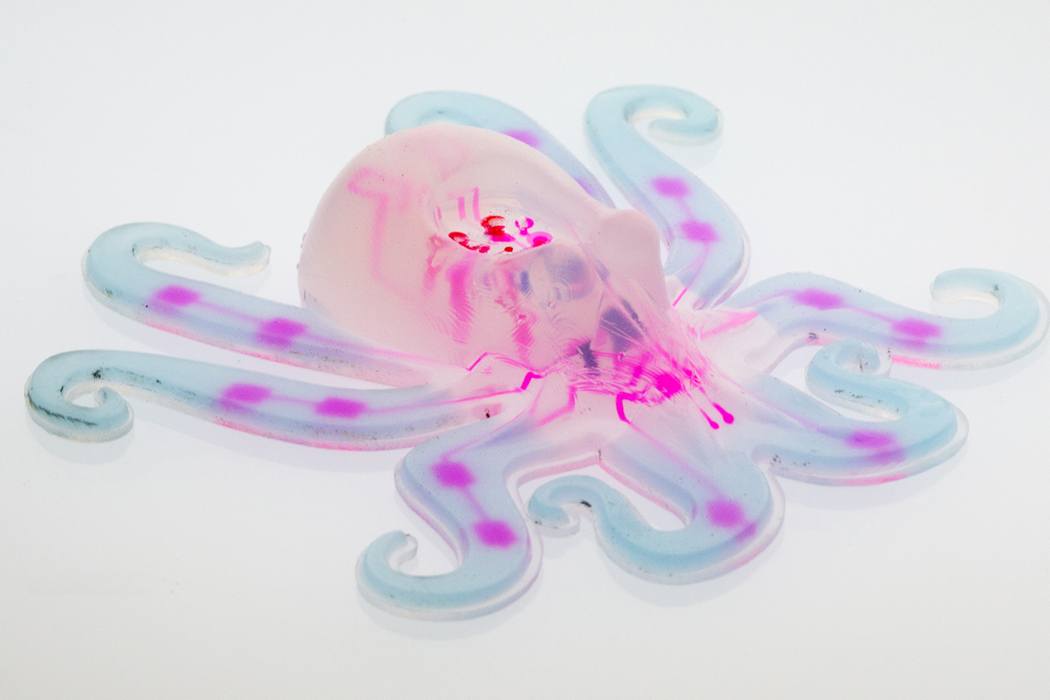Science fiction has accustomed us to metallic, humanoid robots, but there are better models out there. Scientists have created a completely wireless, soft robotic octopus, dubbed the “Octobot.” The robot is made of supple silicon and is powered by a chemical reaction. So far Octobot can only wave its legs up and down somewhat feebly, but it represents a major leap forward in the field of soft robotics.
For some time, scientists observing the natural world have noticed that there are more promising robot models than humans. The human form is difficult to model robotically. Bipedalism is limiting and human joints are tough to re-create; plus, the human form simply isn’t ideal for a lot of the tasks best suited to robots, such as search and rescue operations in tight places. A humanoid robot can be tripped up by something as simple as a step, so forget about slinking through a crack. Boneless creatures, however, have fewer limitations, and come in a huge diversity of forms. Numerous critters exist that can effortlessly climb through small spaces, up walls, or swim to great depths. With small modifications, many of these shapes could manipulate objects. The octopus is particularly intriguing model for a robot, as the creatures are legendary for their ability to squeeze through cracks and their dexterous ability to grab anything.
The key to developing a soft, invertebrate-inspired robot is using the perfect material. In an organism, the tissues and sensory systems are seamlessly integrated inside the animal. Until recently, to construct a machine many small parts had to be fabricated separately, and the whole robot assembled later. Robot design is complicated; the exact fit of each part has to be determined in advance. The seamless undulation of an inchworm could never be perfectly replicated with moving parts. Now, however, computer-assisted design and new manufacturing processes like Shape Deposition Manufacturing and 3D printing allow manufacture of integrated components without the need for interlocking parts. Actuators, sensors, and other parts can all be created in one compound material. Continually improving fabrication processes have culminated in the 3D-printed Octobot.
And even more exciting designs await, including a shape-shifting robot that can harden or soften as needed. This robot, still in the design stage, will be built of a wax material that is hard when cool but softens when a current is run through embedded wires. In the melting/solidification process, the robot self-repairs any damage. Such a device might be useful in many applications, maybe even squeezing through blood vessels to perform micro surgery. The future is almost here. And it is squishy.







